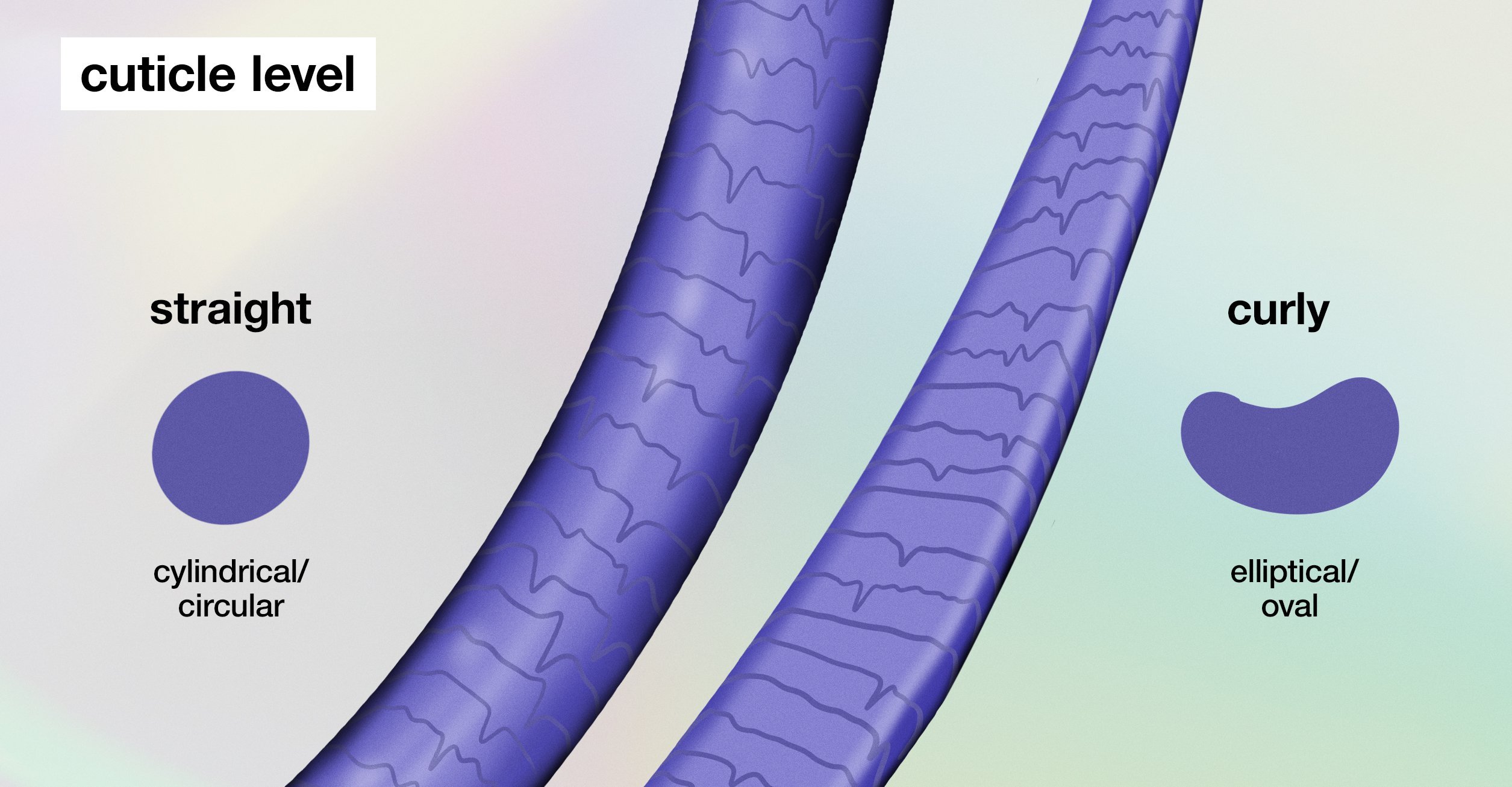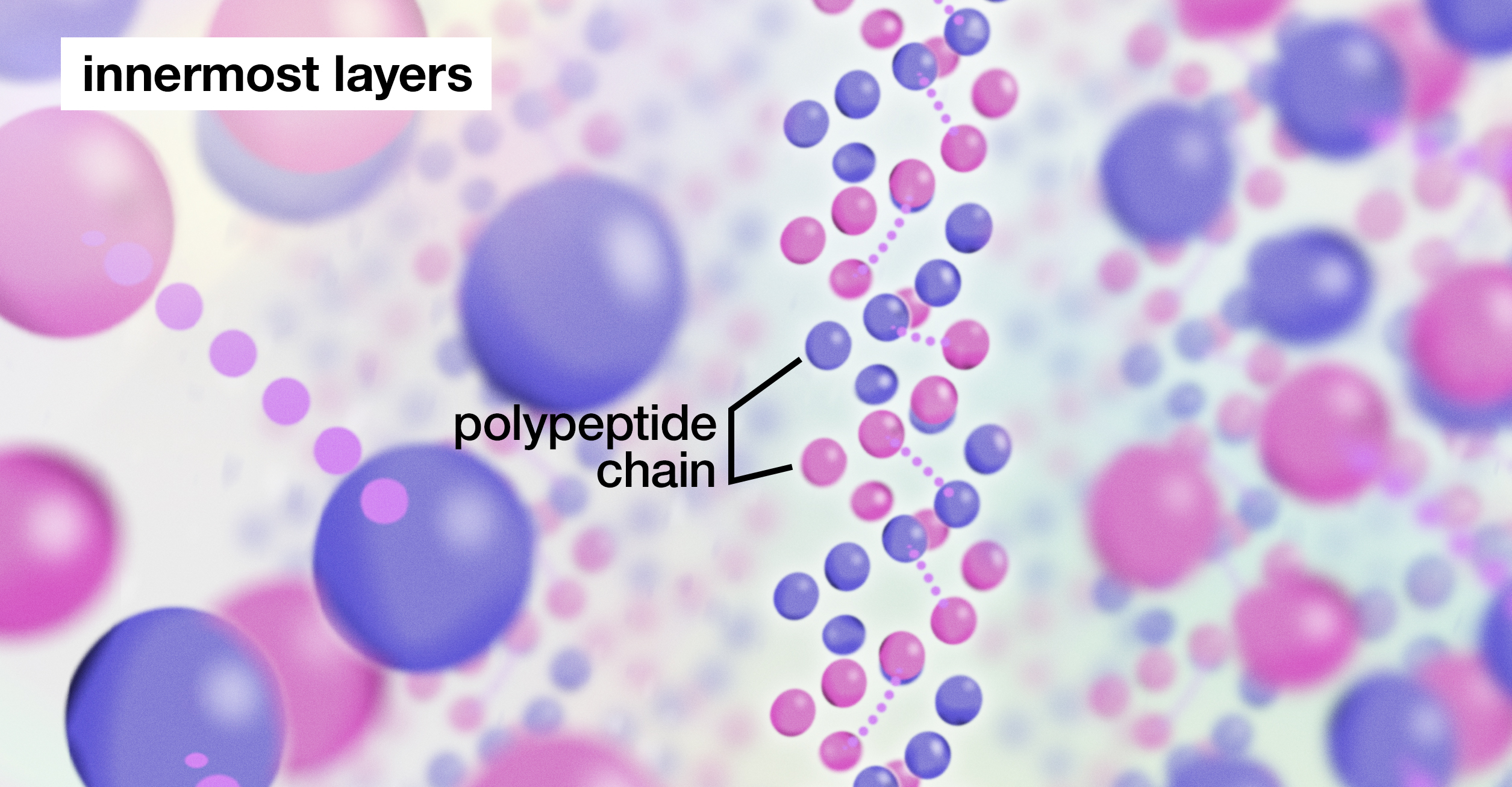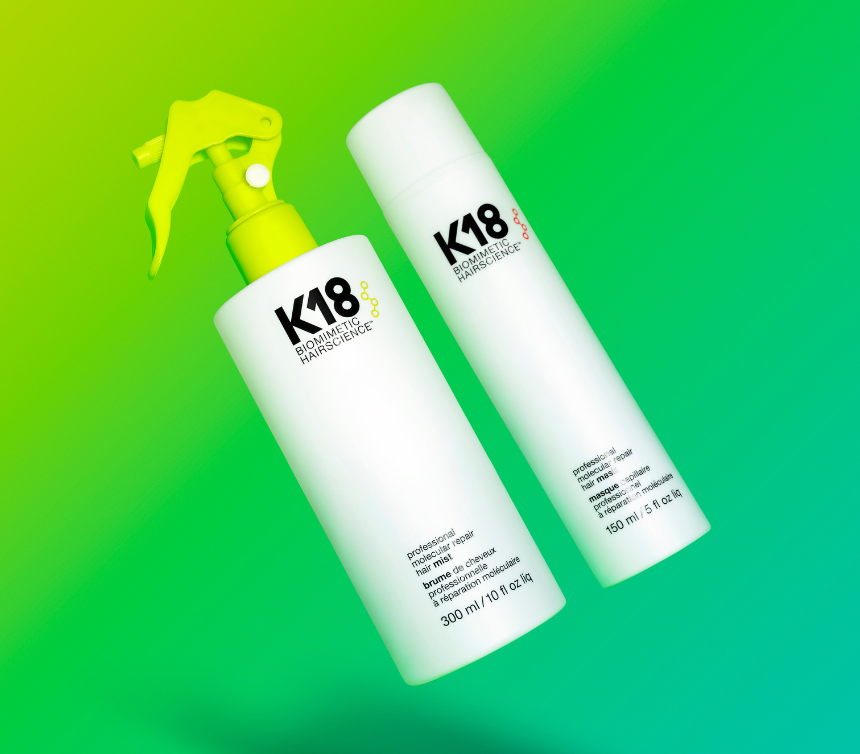Let’s dive into how K18PEPTIDE™ repairs damage no matter what your hair looks like.
From the outside, hair vastly differs in shape and color. But whether straight, wavy, curly, blonde, red, brunette, black, or gray—all hair shares the same keratin structure at the molecular level. That’s why the K18PEPTIDE™ is able to effectively address damage and restore strength for everyone’s hair.
But how does hair take on different shapes and colors in the first place? And where within each strand does it become the same? We’ll break it down for you.
follicles create hair shape
Ever wonder why some people have curly or wavy hair, while others have straight? This is caused by differences in the follicles of your hair, the tiny organs in your scalp that make your hair grow.
Hair is made up of 95% proteins, including keratin. However, these proteins can vary in type due to the arrangement of strings or polypeptide chains (chains of individual peptides bound together by peptide bonds).
The shape of your hair follicles and your protein distribution—the relative amounts of different keratin types throughout your hair strand—determine whether your hair is curly, wavy, or straight.
People with straight hair generally have symmetric follicles that produce hair with a more uniform shape and more even keratin distribution. Asymmetric follicles create oval-shaped hair fibers, resulting in more asymmetric keratin distribution. More of one type of keratin may be found on the inside vs. the outside curve of the fiber so that the hair fiber curves and curls.

what about hair color?
No matter what your natural hair color is—blonde, red, brunette, black, or gray—it comes from the same source: melanin.
Melanin is a pigment found in your hair’s cortex layer, the innermost layer of each strand. There are two distinct types of melanin: brown to black eumelanin and yellow to reddish pheomelanin. The quantity and ratio of these pigments give your hair its color. For example, blondes have less eumelanin and more pheomelanin, while the reverse is true for brunettes.
Over time, your hair loses its melanin pigment, causing it to go gray. For more on the science behind hair graying, check out this post.
Regardless of what your hair looks like on the outside, the most important thing is what’s on the inside: your hair’s keratin structure.
the molecular structure of all hair is the same
Your hair is made up of two primary and distinct layers called the cuticle and the cortex. The cuticle is made up of overlapping, shingle-like cells that protect the cortex layer from the outside environment. Thicker hair can have an additional layer beneath the cortex called the medulla.

Your hair is made up of 95% proteins. These long, fibrous keratin polypeptide chains weave together like a rope to form larger structures that make up your hair’s cortex, providing your hair with its core strength and elasticity. These proteins are cross-linked by many types of bonds including disulfide bonds to strengthen and stabilize your hair further.

So what does this all mean? Despite differences in hair shape and color, all hair has the same fundamental structure requiring the same treatment: molecular repair.
molecular repair is the answer for all hair colors + types
In short—all hair is hair, and all hair endures damage.
Whether caused by environmental factors, mechanical stress, chemical services, or heat exposure, this damage breaks the various bonds, including disulfide and peptide, that hold your hair’s protein structure together and give it strength.
Our signature K18PEPTIDE™ reconnects broken bonds to reverse damage and renew your hair’s strength, elasticity, and appearance leaving you with strong, healthy hair that lasts.



